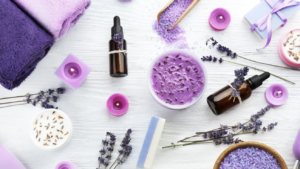What Causes Coffee Breath? And How To Get Rid Of It
Dr Deepa Vakil, Lead Dentist and Clinical Director of Yor Dental:
Coffee can contribute to bad breath through several mechanisms. Firstly, its acidity can lead to a decrease in saliva production. Saliva plays a crucial role in maintaining oral hygiene by washing away food particles and bacteria. When saliva production decreases, bacteria can thrive, leading to an accumulation of odour-causing compounds in the mouth. Additionally, caffeine, a key component of coffee, acts as a diuretic, increasing urine production and potentially causing dehydration. Dehydration reduces saliva flow, further exacerbating the problem. Moreover, coffee contains compounds that can leave a residue on the tongue and teeth. This residue provides a fertile environment for bacteria to grow, producing foul-smelling compounds. Together, these factors contribute to the development of coffee breath, making it essential to address both the oral hygiene aspect and the underlying causes to combat this issue effectively.
Let’s break down the reasons for that lingering coffee breath:
- Acidity: Coffee is acidic, which can lead to a decrease in saliva production. Saliva helps wash away food particles and bacteria in the mouth. When saliva production decreases, bacteria can thrive, leading to bad breath.
- Drying Effect: Caffeine is a diuretic, meaning it increases urine production and can also lead to dehydration. Dehydration reduces saliva flow, allowing bacteria to proliferate in the mouth, contributing to bad breath.
- Residue: Coffee contains compounds that can leave a residue on the tongue and teeth. This residue provides a breeding ground for bacteria, leading to odour-causing compounds.
Tips for Getting Rid of Coffee Breath:
- Hydration: Encourage patients to drink water alongside their coffee to help counteract the drying effect of caffeine and maintain saliva flow. This helps wash away bacteria and food particles, reducing bad breath.
- Proper Oral Hygiene: Emphasise the importance of brushing teeth after consuming coffee to remove residue and bacteria. Additionally, using dental floss or an interdental cleaner can help remove food particles between teeth.
- Tongue Cleaning: Advise patients to use a tongue scraper or brush to remove residue from the surface of the tongue, where bacteria tend to accumulate. This can significantly reduce odour-causing compounds in the mouth.
- Sugarless Gum or Mints: Chewing sugarless gum or sucking on sugar-free mints stimulates saliva production, helping to rinse away bacteria and neutralise odours.
- Limit Consumption: Suggest reducing the frequency or quantity of coffee consumption, especially if bad breath persists despite oral hygiene measures. Switching to alternative beverages or opting for lower-acid coffee options may also help.
- Regular Dental Check-ups: Encourage regular dental visits for professional cleanings and oral examinations. This allows for early detection and treatment of dental issues contributing to bad breath.
By addressing the underlying causes of coffee breath and adopting proper oral hygiene habits, patients can enjoy their coffee without worrying about bad breath.




